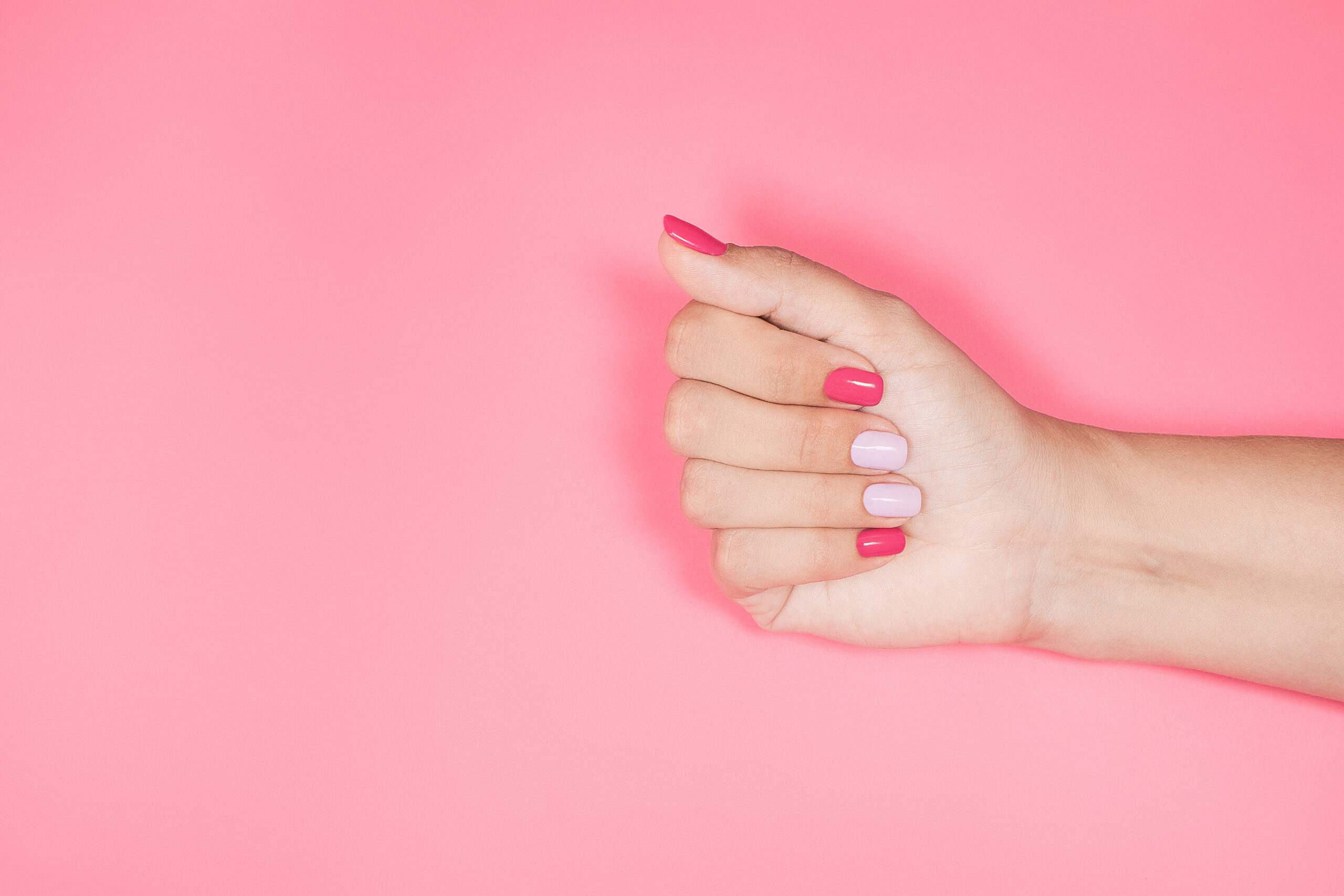In my first two years of university, I used to paint two of my fingernails in different colors.
This seemed like an insignificant activity, a trend that ultimately meant nothing to many people. But my nail polish meant everything to me, a queer girl who wasn’t yet ‘out’ to the world.
It was my way of signifying to the world that I was queer. Many straight people didn’t know from looking at my nails that I was participating in femme-flagging. I wore traditionally feminine clothes and always looked like what my mother calls a ‘girly girl’. In other words, I didn’t match the stereotypical image of a queer woman. I was experiencing femme invisibility – a fairly common issue when a femme queer person isn’t recognized as queer.
What is femme?
There’s no firm definition of femme. But, it’s generally understood to mean someone who expresses their gender in a feminine way through clothing or other means. ‘Femme’ is often seen as the opposite of ‘butch’. Of course, ‘femme’ means something different to everyone who identifies with it.
Maneo Mohale, a writer and editor by trade and a Black queer femme, calls the term femme “one of my many homes.”
“It’s how I connect to a community of family that fall on multiple points of this complex and gorgeous spectrum of gender,” she says.
Marissa, a 27-year-old lesbian who identifies as femme, sat down with me for a conversation. “I’m often called ‘straight passing,’ but I also see the femme identity as one of subversion in its own way.”
“It’s the form of expression that feels most natural to me when it comes to style and appearance, from the clothes I buy to how I style them,” she continued. She even argued that the term ‘femme’ is often associated with lesbians, others might also identify as femme.
“I think the femme identity should be inclusive to more than just lesbians, so for example, non-binary femmes, gay men who identify as femme, and so on.”
Femme invisibility in the LGBTQ+ community
While ‘femme,’ in this context, is a term that originated in queer communities, most queer women are stereotyped as butch. Many queer women are butch, but not all of us are. One of the problems with this stereotype is that those of us who look femme are seldom recognized as queer. In heteronormative spaces, this might be safer. But in our communities, it can be hurtful and lonely to feel like an outsider, like you don’t belong or are invisible. Hence, ‘femme invisibility’.
So, how do we wear our sexuality on our sleeves? It’s challenging to be ‘visibly queer’ because, of course, queerness isn’t something you can see. It’s how someone identifies. No matter your gender expression, your clothing, style, or behavior doesn’t determine your identity. That said, clothing can be a symbol to show our membership to a specific community.
A quick history of queer coding
In the 1970s and 80s, a handkerchief or bandana code became popular among queer men in certain US cities. This flagging was a secret code. A symbol that ‘outed’ you to your own people while keeping you safe from outsiders. The handkerchief was usually worn in a specific way to indicate your sexual preference. The left pocket means you’re a bottom, and the right pocket means you’re a top. Different colors could also refer to other sexual acts. Gray, for example, could indicate that you’re into bondage, while dark blue could symbolize anal sex.
While the handkerchief code is probably one of the most commonly-discussed queer symbols, many others exist. In an Autostraddle article, Keena examines how queer people have symbolized their orientations over the centuries. “The good thing is that even in unfriendly societies, us homos have always managed to find our way to each other,” the author writes. “We’ve done so in a variety of ways, though visual symbols are often among the most recognizable.” These symbols include violets, labrys (a double-headed axe), triangles, and the rainbow flag.
More recently, circa the early 2010s – femmes created their own form of flagging.
What is femme-flagging?
Femme-flagging, or finger-flagging, involves painting one or two nails a different color than the other nails. Like with the handkerchief code, specific nail polish colors symbolized certain things. Black nail polish meant the wearer was into BDSM, and light blue revealed the wearer was into oral sex. But, of course, without a definitive guide, different communities assigned different meanings to other colors. The act itself was more important than the colors.
In college, I met plenty of queer women who femme-flagged without intending to attract a sexual partner. The flagging was done to find friendship and community with other queer women. In 2012, interest in femme-flagging soared. An article in xoJane was widely read and shared, several well-known blog posts celebrated the trend. There’s even an entire Tumblr blog was devoted to femme-flagging.
Marissa tried femme-flagging in college, and while she doesn’t think anyone picked up on it, she enjoyed flagging. “At the time, I liked the idea of it because it felt subtle enough to still be safe and not necessarily ‘out’ me in a situation where I would have felt uncomfortable or unsafe,” she says. When Mohale first encountered femme-flagging, she thought it was ‘an ingenious way to communicate desire and the particularities and idiosyncrasies around sex and sexuality.’
The power behind femme-flagging
What was truly amazing about femme-flagging is that it used something associated with femme-ness – nail polish – to indicate queerness. “There can be a lot of pressure for femme women to change their appearance and become more androgynous or masculine as a means of ‘proving’ their queerness, and I personally find that exhausting,” Marissa says. “I think forms of femme-flagging help to communicate the right message without asking a femme presenting person to radically alter their presentation.”
The Tumblr blog is now defunct, and some might argue the femme-flagging trend is too. Soon after the tremendous femme-flagging rush of ’12, ‘accent nails’ soared in popularity. This was the trend of people painting one nail a different color from the others: it looked like femme-flagging, but it didn’t have the same meaning because it became so popular amongst straight women.
In an article for Racked on the accent nail trend, many manicurists and trend experts discuss the supposed origins of accent nails. The queer movement is mentioned only once by a contributor who moderated the Femme-Flagging Tumblr. While there are many practical reasons why accent nails are popular, many queer femmes feel that it was appropriated from them. Or at least, that the trend has unintentionally taken something away from them.
“As with most things that begin within a specific corner of culture and get diluted, stripped of meaning, and subsumed within the mainstream, I understand how straight women lapped this gem up and appropriated it into the ‘accent nail’,” Mohale says. “It’s certainly made it more difficult to spot a flagging femme.”
The evolution of femme-flagging
The painted nail might not mean much in terms of femme-flagging anymore, but that doesn’t mean that femme-flagging is over. The nails themselves aren’t as important as what they symbolize: a call to other femmes, the queer community, and an assertion of one’s identity. Marissa points out that the age-old rainbow symbol used as pins, patches, or stickers is often used by queer people of all identities and expressions to flag their queerness.
However, a new flagging method specific to femmes – something as precise and powerful as finger-flagging – doesn’t yet exist. “I think a new form of femme flagging would definitely be welcome, whether people are looking to find a partner or just feel more comfortable finding other queers,” Marissa says. “If femme flagging trends help femme people communicate their queerness in a way that feels natural to them, I’m all for it.”
If there’s anything history has taught us, it’s that the death or dilution of one queer symbol will always lead to the birth of another. Yesterday, we used our fingernails. Tomorrow, we might use scrunchies. As Mohale says, “Queers always have, and always will find a way to find each other. We’re brilliant that way.”
Related:
Here’s Why We Need To Reclaim Queer-Coding In ‘The Lion King’ Remake
Scar is Disney’s fabulous gay anti-hero championing resistance to traditional masculinity.
What Does it Mean to be a Part of the Drag Community?
From extravagant costumes, to exaggerated makeup, and lip-syncing to Britney Spears, these individuals have explored gender identity in a whole new way.
Green is the Gayest Color
An exploration.
Unlock the secrets of queer coding and much more – subscribe to the IntoMore newsletter and embrace the rainbow!”
Don't forget to share:
Help make sure LGBTQ+ stories are being told...
We can't rely on mainstream media to tell our stories. That's why we don't lock our articles behind a paywall. Will you support our mission with a contribution today?
Cancel anytime · Proudly LGBTQ+ owned and operated
Read More in Culture
The Latest on INTO
Subscribe to get a twice-weekly dose of queer news, updates, and insights from the INTO team.
in Your Inbox
















